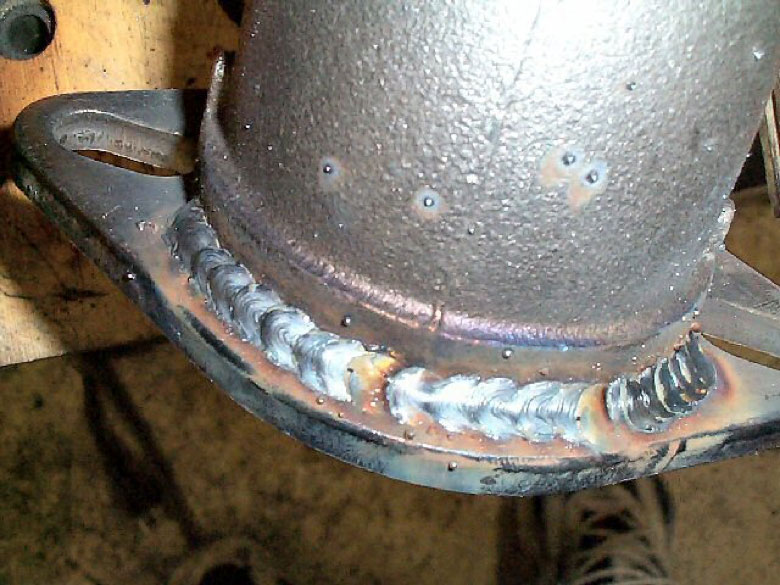
October 23, 2019
Welding is an economical and faster process for castling, bolting, and riveting. Nowadays, weldability is becoming essential in every industry. This process needs a particular metal with excellent weldability. Some metals can retain a higher quality of welding as compared to other metals. For this reason, it becomes crucial to understand these factors before selecting materials.
Cast iron contains 2 percent carbon, comprising of ductile, malleable, and gray iron. In cast welding, iron is an essential metal because it can increase durability and decrease vibration. You may use this metal in oil pans, wheels, flywheels, and hammers.
For engineering and agricultural industries, and pressure pipes, ductile iron is common. To prevent rusting, people use grey cast iron. This metal can carry heavy loads. Moreover, ductile and malleable iron is famous for its flexibility and heat-resistant qualities. As compared to steel, the cast iron is reliable for manufacturing procedures. The process can be expensive and complicated.
Carbon in cast steel is less than 2 percent. It includes alloy steel and carbon steel. As compared to cast iron, steel is versatile for designing. It is easy to manipulate cast steel to create complicated shapes and hollow pieces. Check this in depth guide on steel to learn more about its properties and characteristics.
For cast welding, steel is solid metal. Based on the application of steel, you can change its chemical composition. For instance, it is suitable to use for heavy loads and in a humid environment.
Cast steel can boast uniformity in different directions. With the help of steel, you can create precise and accurate finished products. Clients prefer it for low prices and short manufacturing time. As compared to cast iron, faults of steel lie in wear resistance and mobility.
Welding with cast iron can be challenging because of the high carbon content. It is ten times more difficult than steel. If you want to get the advantage of hardness, you will need cast iron for welding. Cast iron is different than malleable material. If it is stressed or heated, it may not deform or stretch. Remember, it can crack because of the wrong treatment. Here are some steps to follow to weld with cast iron:
The casting must be appropriately cleaned before you begin welding. Make sure to remove excess materials from the surface of the alloy. You have to clean away grease, dirt, paint, and foreign material. Slowly and carefully apply heat to a weld area. It will be helpful to remove entrapped gas from the welding zone.
If you want to machine a part after welding it, make sure to select nickel-type electrodes. Remember, cast iron is susceptible to cracking under stress. To decrease the chances of cracks and defects, make sure to control heat when welding.
It needs proper preheating before welding. Remember, slow cooling is an integral part of this process once finished. Typical temperatures for preheating are 500 to 1200 Fahrenheit. Make sure to do it uniformly and slowly. Avoid overheating to any part because temperature over 1400 can be dangerous.
Stainless steel can withstand corrosion; therefore, it is suitable for durable jobs. The stainless steel is famous for chromium content, a chromium-rich oxide (naturally occurring) film on the surface. It is inert, and a thin film adheres tightly to the metal’s surface. For this reason, this film can repair itself in the presence of oxygen.
This metal can withstand both cold and hot temperatures without affecting its strength. Moreover, it can repel bacterial growth. It becomes an outstanding choice for the food and medical industries. With its anti-corrosive and durability properties, you can use it for piping and petrochemical applications, energy industries, and aerospace. Stainless steel is suitable for transporting corrosive chemicals.
The alloying elements in stainless steel offer thermal conductivity and heat insulation. Arc welding process can be a challenge with steel. In a weld pool, insulation indicates the arc’s heat becomes concentrated. It leads to different issues, such as warping, burn-through, and oxidation. In this process, the filler metal can affect the quality of the weld.
Sugaring or discoloration is a common problem. Discoloration indicates that the use of a glass shield is inadequate during this process. This process can pull chrome out of stainless steel. It may affect the corrosion-resistance properties of steel. Remember, sugaring becomes the worst condition and need a rework, for aesthetic and quality reasons. For steel welding, the filler metals are expensive than other options.
In this episode, I sat down with Beejan Giga, Director | Partner and Caleb Emerson, Senior Results Manager at Carpedia International. We discussed the insights behind their recent Industry Today article, “Thinking Three Moves Ahead” and together we explored how manufacturers can plan more strategically, align with their suppliers, and build the operational discipline needed to support intentional, sustainable growth. It was a conversation packed with practical perspectives on navigating a fast-changing industry landscape.